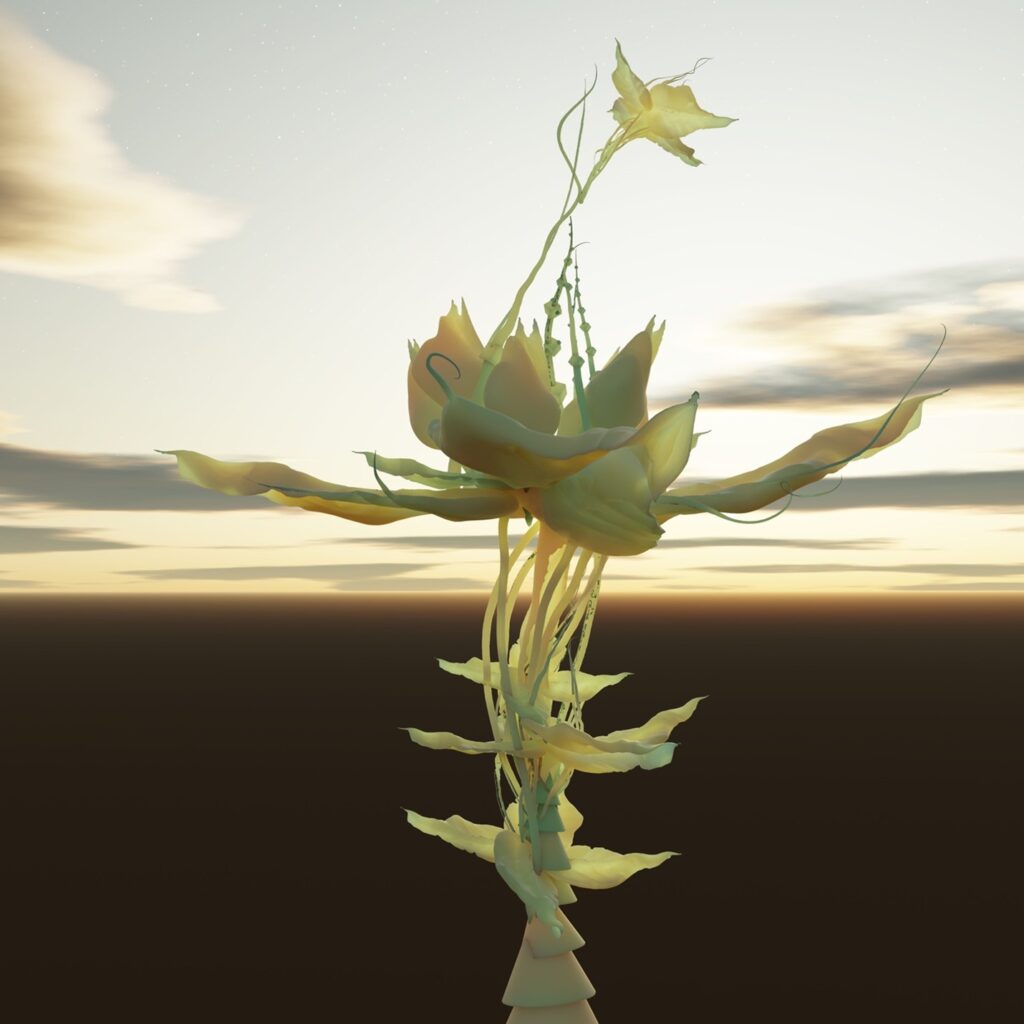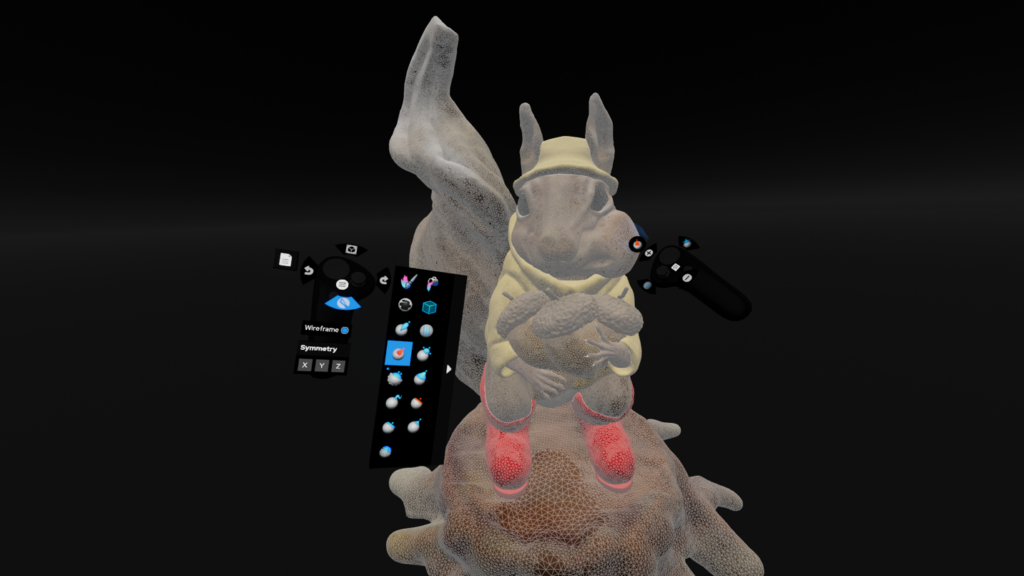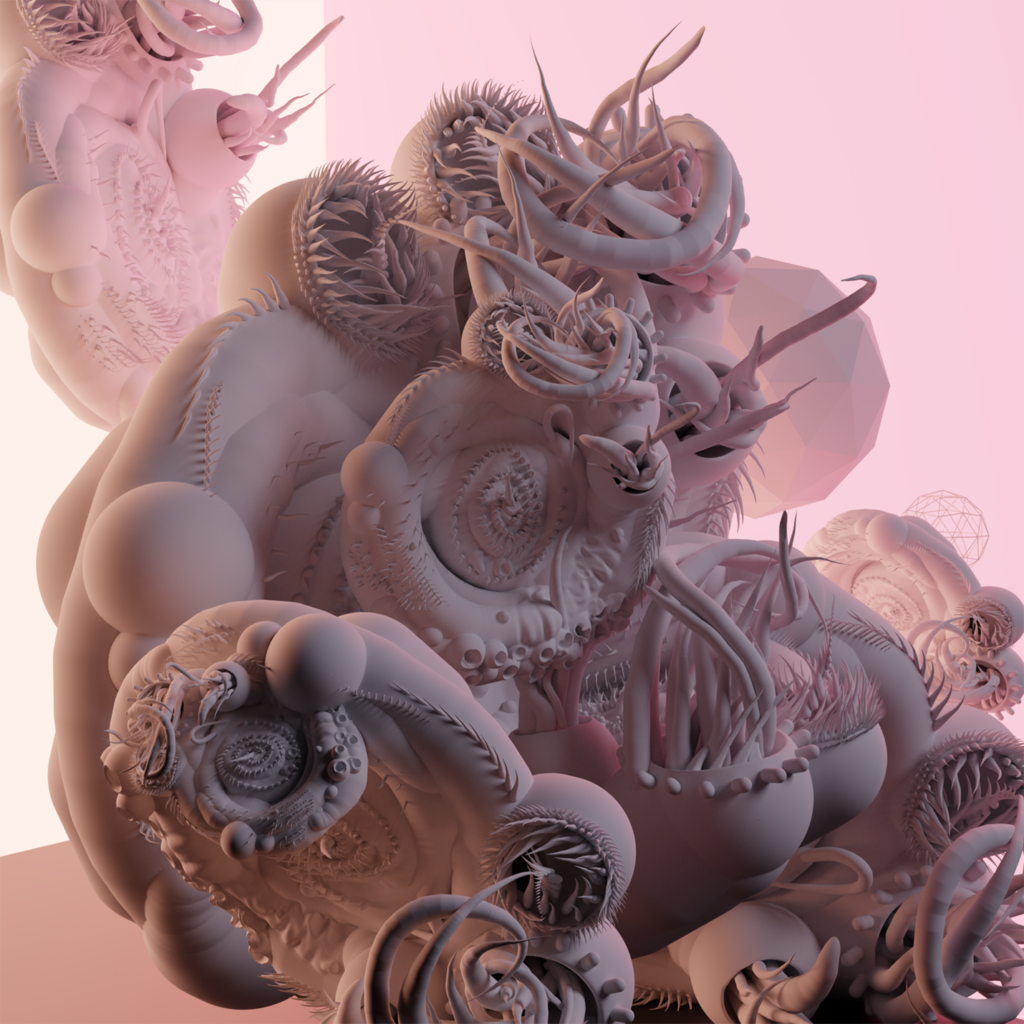3D modeling using traditional tools requires patience, as the process comes with a steep learning curve. There is an alternative, says Leopoly, a VR 3D developer company—virtual reality. A recent study from the company published on the ACM Digital Library sheds light on how virtual reality is transforming the way people learn and apply 3D design skills. The report highlights how VR can help beginners to 3D overcome the barriers to entry and serve as a gateway for non-professionals to solve complex design problems. Leopoly does have skin in this game. The company focuses on three-dimensional VR, and in 2017, began offering an early-access version of its Shapelab 3D VR sculpting software on Steam. This past July, the company began offering a fully featured Shapelab. While competitors’ products use a voxel-based engine, Leopoly took a different route and is using a polygonal mesh-based engine in Shapelab. As a result, users can produce images with higher resolution and higher levels of detail. The tools and capabilities are well suited for professionals, while the intuitiveness of the UI and processes make it attractive to non-professional 3D creators.

What do we think? A lot of people have opinions about VR—it is here and moving fast, it is almost here, it is coming, it has stalled…. Last year, VR (and its cousins, AR and MR) were buzzwords, and we all waited for the headsets that would make those realities, well, a reality. The pace in this race toward the Rs has slowed, but it has not stopped. VR, AR, and MR content is still being produced and is desired for a wide range of use cases, particularly among professionals. But what about the many non-professionals who would like to create 3D?
Creating 3D content within VR makes sense, especially with a tool that is easy and intuitive to use. No doubt, though, these tools take some getting used to, especially for artists who have been using traditional software like Maya, 3ds Max, Cinema 4D, and so forth on a flat surface. Those traditional software offerings are difficult to learn, which is not a problem for artists who use them daily. But for non-professional 3D users, the complexity of the tools often keeps 3D out of their reach. Consider how many artists embrace 3D sculpting tools like ZBrush and Mudbox, giving them the ability to craft 3D models using digital clay, with actions that mimic those used in a non-digital environment. 3D sculpting and modeling tools for VR can provide artists/non-artists with a similar real-world environment in which to create—in an even more natural way. But, what about that headset? As those devices become more comfortable, no doubt that will become less of an issue.
There are a handful of tools available for painting, modeling, designing, and animating in VR. Is Leopoly’s Shapelab unique and powerful enough to entice users to this atypical workflow? Possibly. The company has put a lot of thought into the product and has considered suggestions and requests from early adopters. Leopoly seems to know its audience, the non-professional 3D creator, yet professionals should also be attracted to its features for crafting high-value content.
Leopoly’s Shapelab 3D VR modeling software is out of early access and ready for pros and non-pros
Creating 3D assets in virtual reality is not new—Adobe’s Medium does just that on the Oculus Rift and Quest plus Link. There are others available too, including Smoothstep’s Quill, the open-sourced Open Brush, and Adobe’s Substance 3D Modeler, to name a few. This is still a niche market. However, as VR, AR, and XR headsets become more prevalent, that could drive up the market for these tools within the massive DCC industry, where demand for digital content continues to grow. Leopoly, a VR 3D developer company, sure hopes so.
Recently, Leopoly published a study on the ACM Digital Library titled “Virtual Reality: The Gateway for Non-professionals to Solve Complex Design Problems” that sheds light on how VR is transforming the way people learn and apply 3D design skills and illustrates how VR has opened doors to 3D content creation for users from diverse professional backgrounds. This includes digital sculptors, indie developers, students, hobbyists, even healthcare practitioners, especially those working in prosthetics and orthotics.
As noted in the JPR 2023 Digital Content Creation Market report, the demand for 3D creation skills is increasing significantly across a wide swath of industries, from gaming and filmmaking, to healthcare and education. For some, though, particularly those outside the typical creator segment, mastering these skills can be daunting. However, VR makes the process easier for beginners to 3D, enabling them to immerse themselves in a 3D space, engage with their work at life-size, and create concepts and 3D assets with ease.
By lowering the barrier to entry, Leopoly believes virtual reality will empower a wider audience to contribute to the growing need for 3D content. And that is the company’s goal.
“We argue that VR could open doors for people with no background in 3D modeling to solve complex design problems needed to digitize their traditional workflows,” Leopoly states in its study abstract.
About Leopoly
Leopoly started in 2015 as a spin-off of Leonar3Do, a company developing an integrated hardware and software platform capable of creating a three-dimensional VR environment on desktop computers and other devices to enable the creation, manipulation, and analysis of 3D objects in a three-dimensional space. Leopoly continued that mission by developing customized XR and 3D software solutions for businesses. Also looking to bridge the gap in 3D design among beginners, professional designers, teachers, and students, the company created an easy-to-use, Web-based 3D modeling platform capable of generating files for 3D printing in a playful environment. The company then expanded this unique CAD engine to virtual reality, and Shapelab was born.
A 3D VR modeling application, Shapelab provides a 3D sculpting experience that takes advantage of VR interactions. It is mostly used for creating organic models that can be used as digital assets for games, films, virtual worlds, or even 2D output such as illustrations and storyboards. The models can also be 3D printed. The software uses a polygon-mesh design engine, resulting in higher levels of detail. The tool includes PBR vertex painting for assigning color and material properties to vertices. So, creators can paint their models with industry-grade painting tools and generate and export texture maps (normal maps, PBR properties, and colors) for their vertex-painted creations during the export process.
Because Shapelab is primarily a PC VR application, a person needs to use a VR headset connected to a PC in order to use it. The software works with most VR headsets including HTC’s Vive, Valve’s Index, and Meta’s Oculus Rift, Quest, Quest 2, and Quest Pro, as well as Microsoft’s Windows Mixed Reality devices.
Shapelab became available back in 2017 on Steam as a 3D VR software prototype and remained as an early-access offering. During that time, more features were gradually added as user interest grew, until the full-featured software became generally released this past July, right before Siggraph 2023. That does not mean development of the product has creased, as Leopoly says it is planning new features and will release the software on other platforms such as the desktop and 3D displays. (Shapelab is available now on zSpace too, and the company has partnered with Dimenco, recently acquired by Leia, to make the tool available on 3D displays in the near future, demonstrating this capability during Siggraph.)
Shapelab can be incorporated into a range of 3D design workflows and can be used alongside other traditional tools.
The software features:
- A polygonal mesh-based design engine
- Global topology manipulation tools and optional dynamic topology mode
- An intuitive, clean interface with virtually no learning curve
- Industry-grade sculpting and painting tools
- Common file format support (OBJ, GLB, FBX, STL)
- Vertex painting and texture export
- Precise transform values
- The ability to inspect, clean, and edit 3D scan data
Unlike other 3D VR creative tools, Shapelab uses a polygon-mesh design engine rather than the typical voxel-based engine, enabling users to create higher levels of details and resolution. Leopoly contends users can create three to five times more detail than when using other VR tools, enabling artists to capture the nuances of organic shapes. There is also a dynamic topology mode to tessellate and decimate polygons anywhere on the mesh, the company says, allowing details to be added or removed on the fly.
The software produces a topology that is more controlled in terms of the distribution of the vertices, edges, and faces. And, the models are more compatible with traditional texturing techniques and UV mapping. Because artists are more familiar with polygon mesh-based sculpting workflows and tools like Adobe’s ZBrush and Autodesk’s Mudbox, they find it easier to integrate the software into their creative processes.

Big on VR
Leopoly obviously believes that virtual reality can be integrated into the design workflow to increase productivity and give users a more intuitive and enjoyable experience than they would have with traditional flat-screen solutions. Working with users, the company has concluded that sculpting in VR provides creators with spatial vision and a better understanding of perspective.
In addition, VR provides lifelike environments and interactions, and users can scale their model to life-size and instantly test their work in VR from different perspectives. Navigation in 3D space is easier in VR than it is on a 2D screen, enabling artists to blockout designs much faster, easily zoom in and out, and create complex shapes with a single brushstroke, the company pointed out. Not to mention, creating in VR provides a fun, relaxing experience for beginners and professionals alike.
Leopoly concedes that while VR 3D creative applications have made significant strides, they have not yet fully replaced traditional 3D modeling tools for professionals. However, the VR market is evolving rapidly, the company said. With innovative features like its polygon mesh-based engine and professional-grade features, it aims to draw in professionals as well as beginners.
Leopoly recently launched Shapelab as freemium software, so users can download it and explore all of its features without limitation for five days, giving them an opportunity to try VR for 3D modeling. Shapelab is available on the company’s website for a subscription plan of $9.99 per month, along with a special discount that’s available until the end of 2023.
